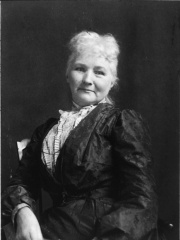
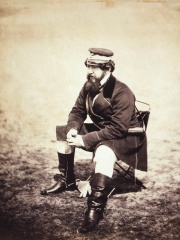
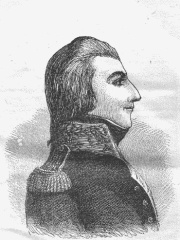
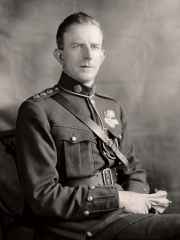
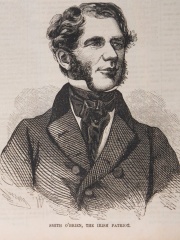
The Most Famous
SOCIAL ACTIVISTS from Ireland
This page contains a list of the greatest Irish Social Activists. The pantheon dataset contains 840 Social Activists, 6 of which were born in Ireland. This makes Ireland the birth place of the 36th most number of Social Activists behind Austria, and Peru.
Top 6
The following people are considered by Pantheon to be the most legendary Irish Social Activists of all time. This list of famous Irish Social Activists is sorted by HPI (Historical Popularity Index), a metric that aggregates information on a biography's online popularity.

1. Mary Harris Jones (1837 - 1930)
With an HPI of 78.47, Mary Harris Jones is the most famous Irish Social Activist. Her biography has been translated into 60 different languages on wikipedia.
Mary G. Harris Jones (1837 (baptized) – November 30, 1930), known as Mother Jones from 1897 onward, was an Irish-born American labor organizer, former schoolteacher, and dressmaker who became a prominent union organizer, community organizer, and activist. She helped coordinate major strikes, secure bans on child labor, and co-founded the trade union Industrial Workers of the World (IWW). After Jones's husband and four children all died of yellow fever in 1867 and her dress shop was destroyed in the Great Chicago Fire of 1871, she became an organizer for the Knights of Labor and the United Mine Workers of America union. In 1902, she was called "the most dangerous woman in America" for her success in organizing miners and their families against the mine owners. In 1903, to protest the lax enforcement of the child labor laws in the Pennsylvania mines and silk mills, she organized a children's march from Philadelphia to the home of President Theodore Roosevelt in New York.

2. William Howard Russell (1820 - 1907)
With an HPI of 57.65, William Howard Russell is the 2nd most famous Irish Social Activist. His biography has been translated into 22 different languages.
Sir William Howard Russell, (28 March 1827 – 10 February 1907) was an Irish reporter with The Times, and is considered to have been one of the first modern war correspondents. He spent 22 months covering the Crimean War, including the Siege of Sevastopol and the Charge of the Light Brigade. He later covered events during the Indian Rebellion of 1857, the American Civil War, the Austro-Prussian War, and the Franco-Prussian War. His dispatches from Crimea to The Times are regarded as the world's first war correspondence.

3. Wolfe Tone (1763 - 1798)
With an HPI of 54.43, Wolfe Tone is the 3rd most famous Irish Social Activist. His biography has been translated into 28 different languages.
Theobald Wolfe Tone (Irish: Bhulbh Teón; 20 June 1763 – 19 November 1798), posthumously known as Wolfe Tone, was a revolutionary exponent of Irish independence and is an iconic figure for Irish republicanism. Convinced that if his fellow Protestants feared to make common cause with the Catholic majority, the British Crown would continue to govern Ireland in the English interest, in 1791 he helped form the Society of United Irishmen. Fuelled by the popular grievances of rents, tithes and taxes, driven by martial-law repression, and despairing of reform, the society developed as an insurrectionary movement. When, in the early summer of 1798, it broke into open rebellion, Tone was in exile soliciting assistance from the French Republic. In October 1798, on his second attempt to land in Ireland with French troops and supplies, he was taken prisoner. Sentenced to be hanged, he died from a reportedly self-inflicted wound. Since the mid-nineteenth century, his name has been invoked, and his legacy disputed, by different factions of Irish republicanism. These have held annual, but separate, commemorations at his graveside in Bodenstown, County Kildare.

4. Eoin O'Duffy (1890 - 1944)
With an HPI of 53.27, Eoin O'Duffy is the 4th most famous Irish Social Activist. His biography has been translated into 17 different languages.
Eoin O'Duffy (born Owen Duffy; 28 January 1890 – 30 November 1944) was an Irish revolutionary, general, Garda, politician and fascist. O'Duffy was the leader of the Monaghan Brigade of the Irish Republican Army (IRA) and a prominent figure in the Ulster IRA during the Irish War of Independence. In this capacity, he became Chief of Staff of the IRA in 1922. He accepted the Anglo-Irish Treaty and as a general became Chief of Staff of the National Army in the Irish Civil War, on the pro-Treaty side. He had been an early member of Sinn Féin and was elected a Teachta Dála (TD) for Monaghan in the Second Dáil in 1921, supporting pro-Treaty Sinn Féin in the split of 1922. In 1923 he became associated with Cumann na nGaedheal. He was appointed as the second Commissioner of the Garda Síochána in 1922, the police force of the new Irish Free State, serving until 1933. In 1924, during the Irish Army Mutiny, he was appointed as General Officer Commanding of the Irish Army, holding both roles until 1925. In the 1930s O'Duffy became attracted to the various fascist movements on the continent. In 1933 O'Duffy took control of the paramilitary movement called Army Comrades Association, also known as the Blueshirts. When the Blueshirts merged with Cumann na nGaedhael and National Centre Party to form Fine Gael, O'Duffy began as the new party's first leader, remaining as such for 13 months. He subsequently raised the Irish Brigade to fight for the Nationalists in the Spanish Civil War as an act of Catholic solidarity and was inspired by Benito Mussolini's Italy to create the National Corporate Party. During the Second World War, he was clandestinely involved in pro-Axis circles but focused mostly on athletic administration in his capacity as president of the National Athletics and Cycling Association. He died in 1944. O'Duffy was active in multiple sporting bodies, including the Gaelic Athletic Association and the Irish Olympic Council.
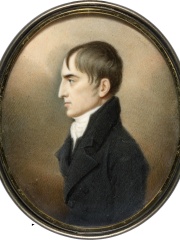
5. Robert Emmet (1778 - 1803)
With an HPI of 52.09, Robert Emmet is the 5th most famous Irish Social Activist. His biography has been translated into 23 different languages.
Robert Emmet (4 March 1778 – 20 September 1803) was an Irish Republican, orator and rebel leader. Following the suppression of the United Irish uprising in 1798, he sought to organise a renewed attempt in Ireland to overthrow the British Crown and Protestant Ascendancy in Ireland, and to break the recently enforced union with Great Britain. Emmet entertained, but ultimately abandoned, hopes of immediate French assistance and of coordination with radical militants in Great Britain. In Ireland, many of the surviving veterans of '98 hesitated to lend their support, and his rising in Dublin in 1803 proved abortive. Emmet’s Proclamation of the Provisional Government to the People of Ireland, his Speech from the Dock, and his "sacrificial" end on the gallows inspired later generations of Irish republicans. His memory was invoked by Patrick Pearse who in 1916 was again to proclaim a provisional government in Dublin.

6. William Smith O'Brien (1803 - 1864)
With an HPI of 50.32, William Smith O'Brien is the 6th most famous Irish Social Activist. Her biography has been translated into 18 different languages.
William Smith O'Brien (Irish: Liam Mac Gabhann Ó Briain; 17 October 1803 – 18 June 1864) was an Irish republican who, in the course of Ireland's Great Famine, had been converted to the cause of national independence while sitting as a unionist member of the United Kingdom Parliament. Returning from revolutionary Paris (the Second French Republic) with the first Irish tricolour, in 1848 he attempted an armed rebellion. With fellow "Young Irelanders" he was convicted of sedition and transported to Van Diemen's Land (Tasmania). Pardoned, in 1856 he returned to Ireland, where he published an unrepentant memoir and, through Ossianic Society, promoted the study and revival of the Irish language.
People
Pantheon has 6 people classified as Irish social activists born between 1763 and 1890. Of these 6, none of them are still alive today. The most famous deceased Irish social activists include Mary Harris Jones, William Howard Russell, and Wolfe Tone.
Deceased Irish Social Activists
Go to all RankingsMary Harris Jones
1837 - 1930
HPI: 78.47
William Howard Russell
1820 - 1907
HPI: 57.65
Wolfe Tone
1763 - 1798
HPI: 54.43
Eoin O'Duffy
1890 - 1944
HPI: 53.27
Robert Emmet
1778 - 1803
HPI: 52.09
William Smith O'Brien
1803 - 1864
HPI: 50.32
Overlapping Lives
Which Social Activists were alive at the same time? This visualization shows the lifespans of the 6 most globally memorable Social Activists since 1700.

